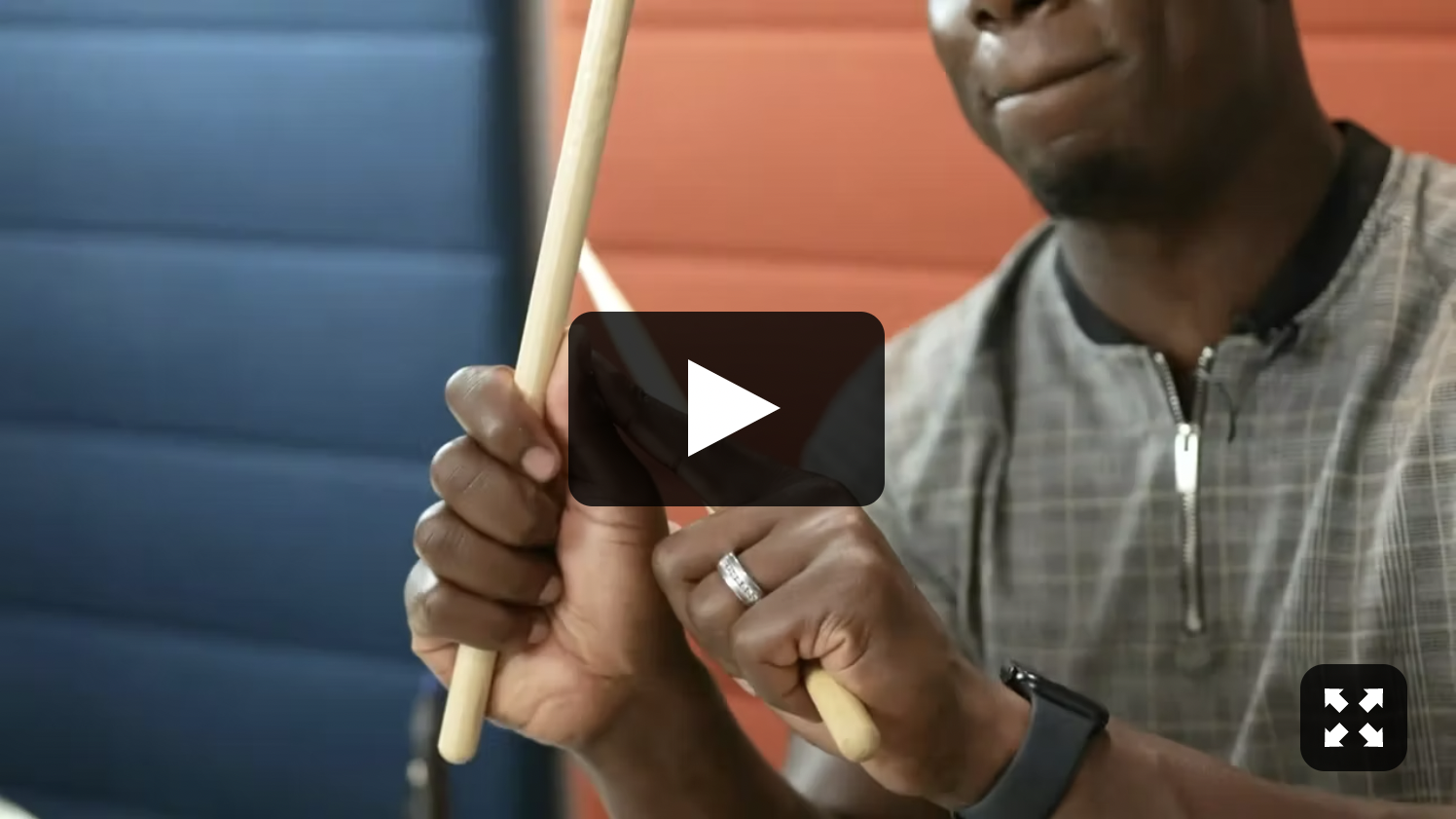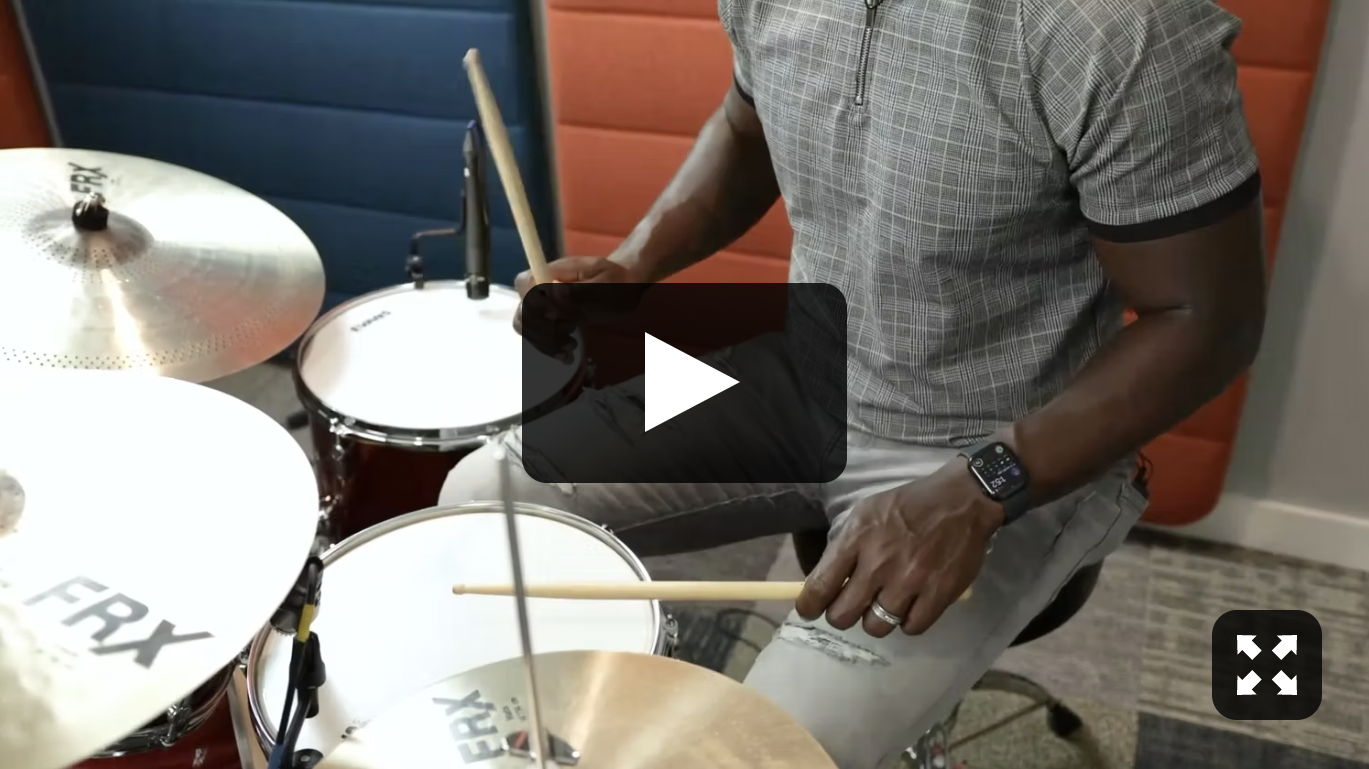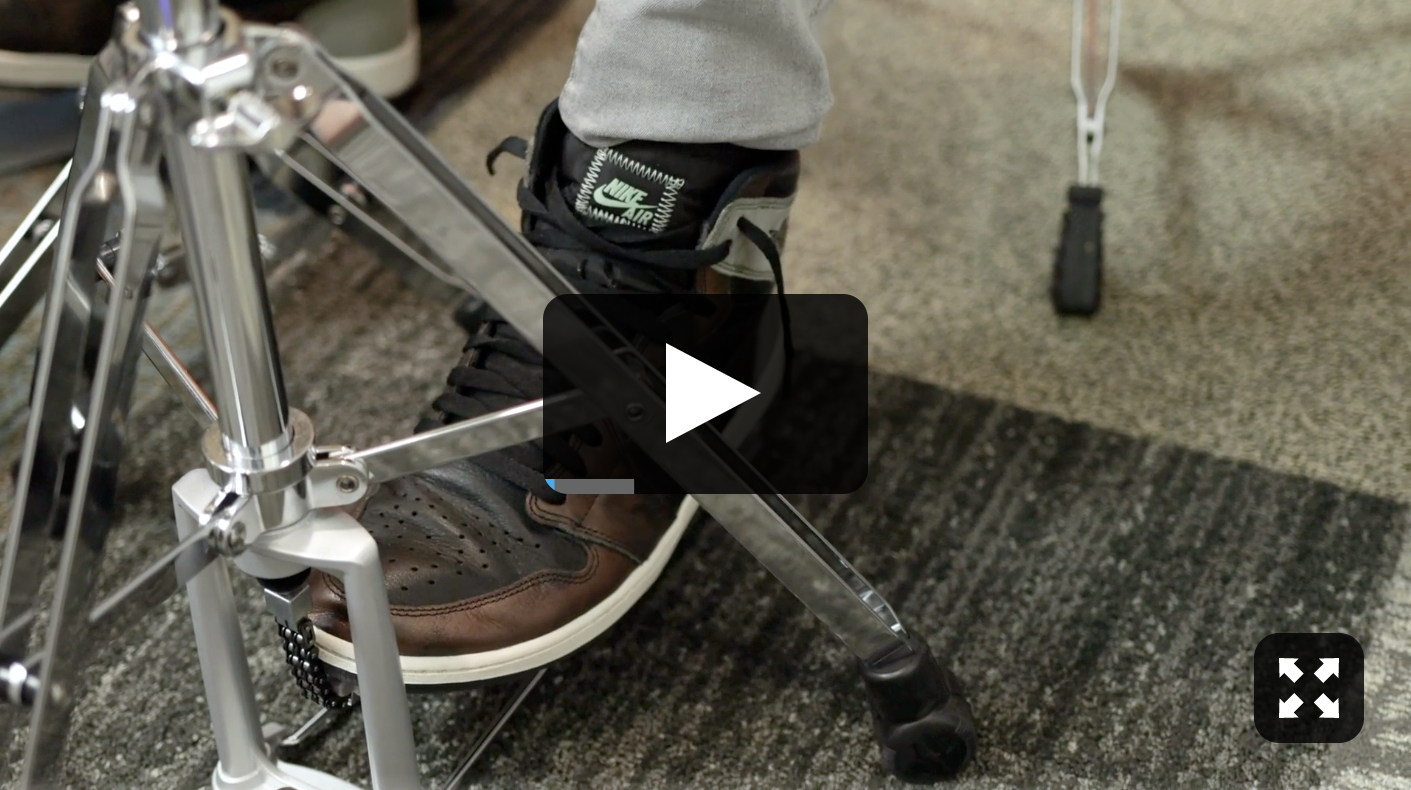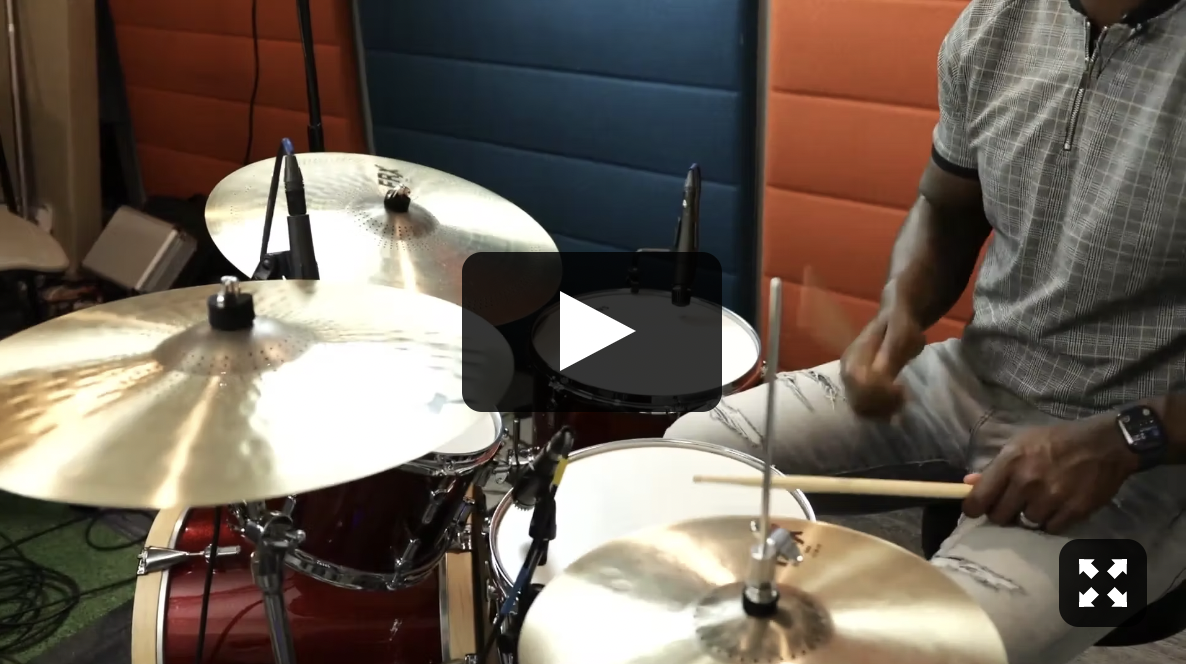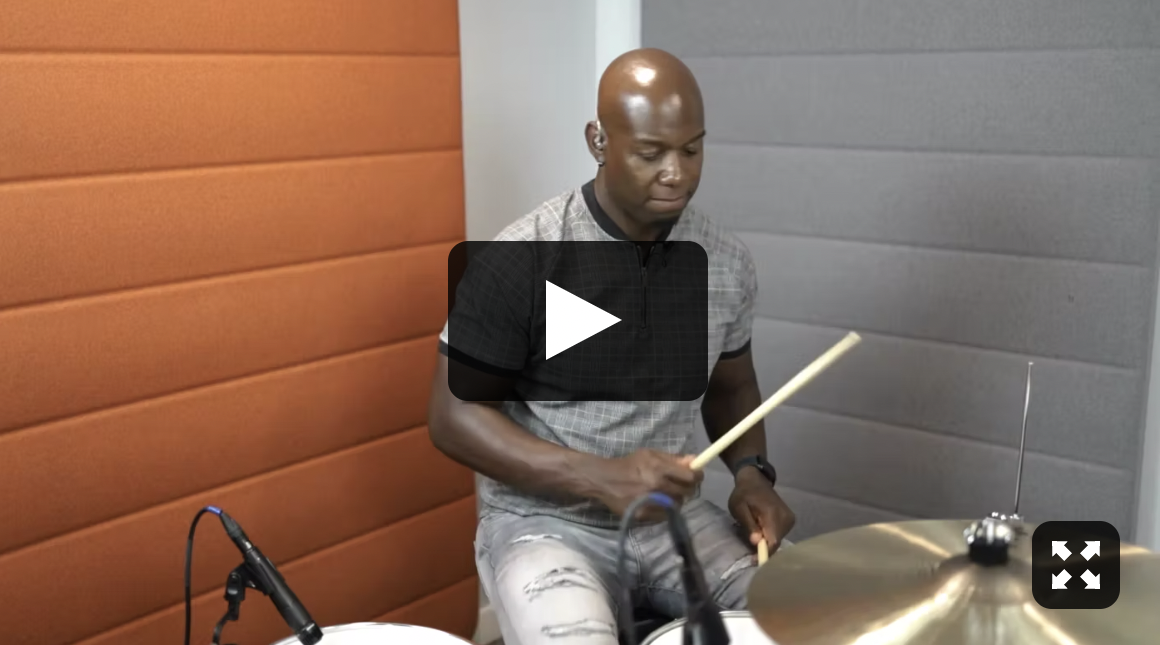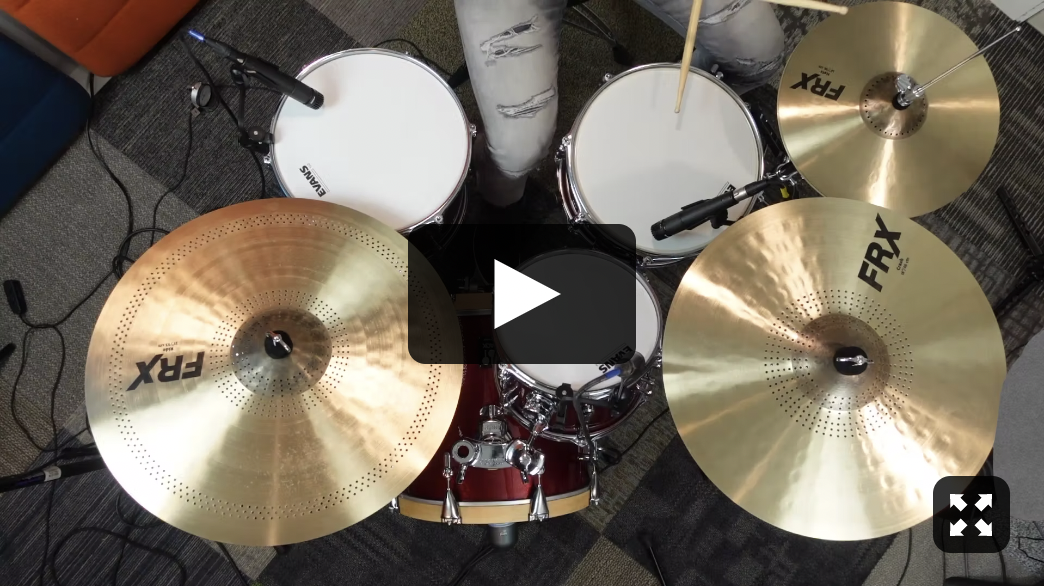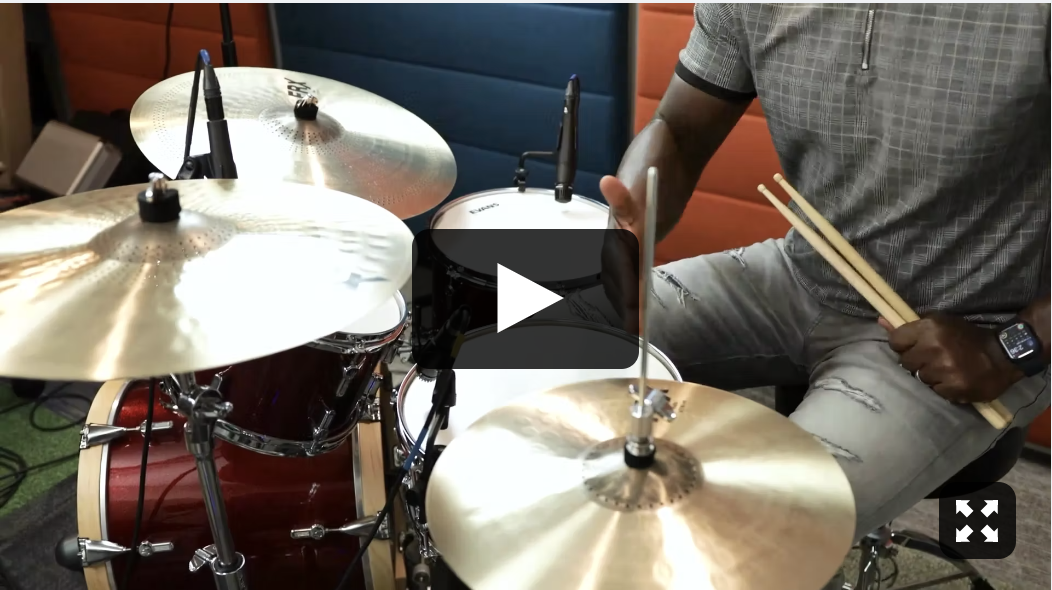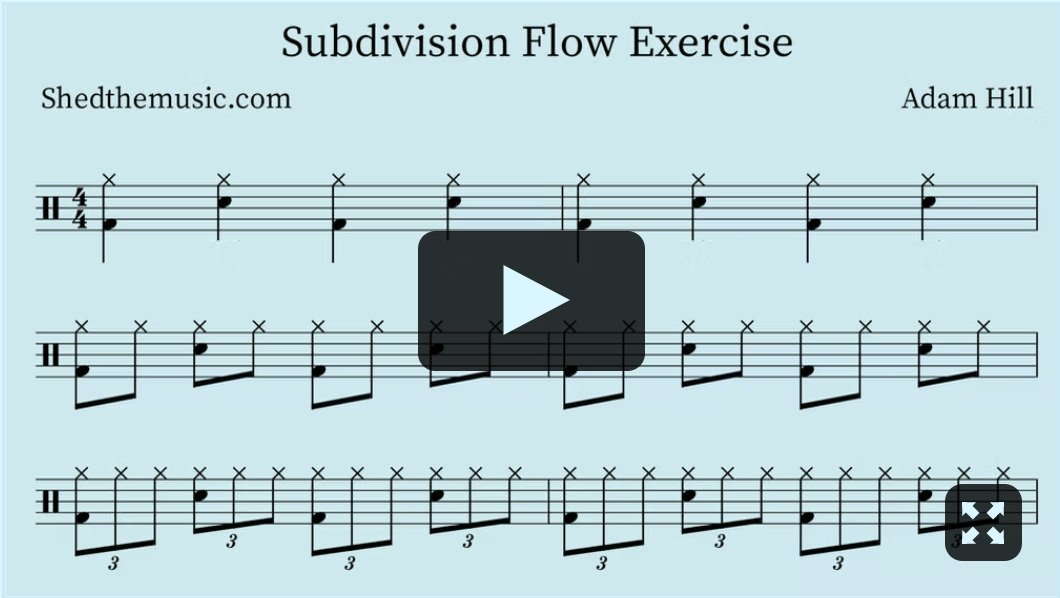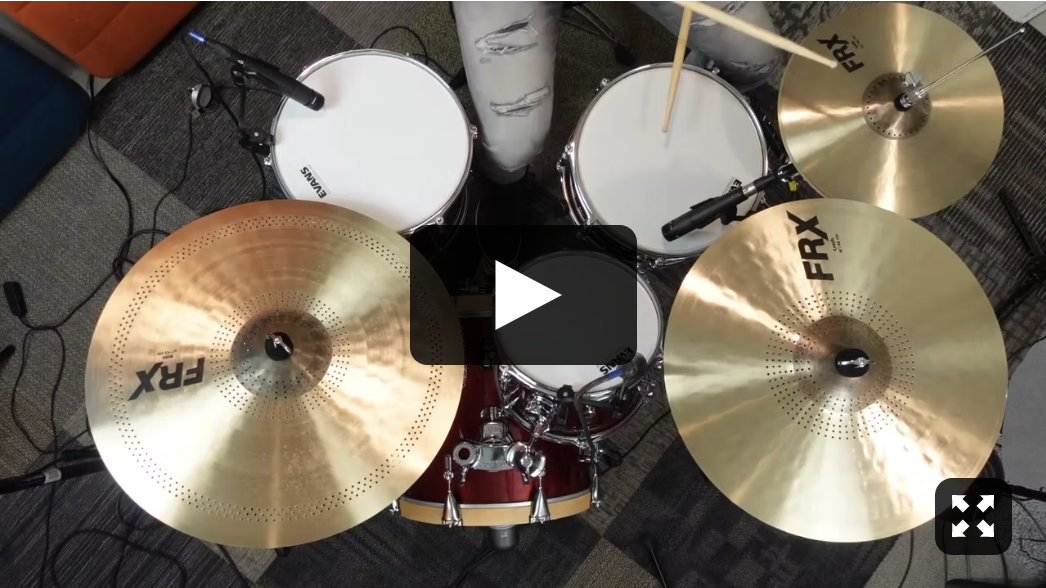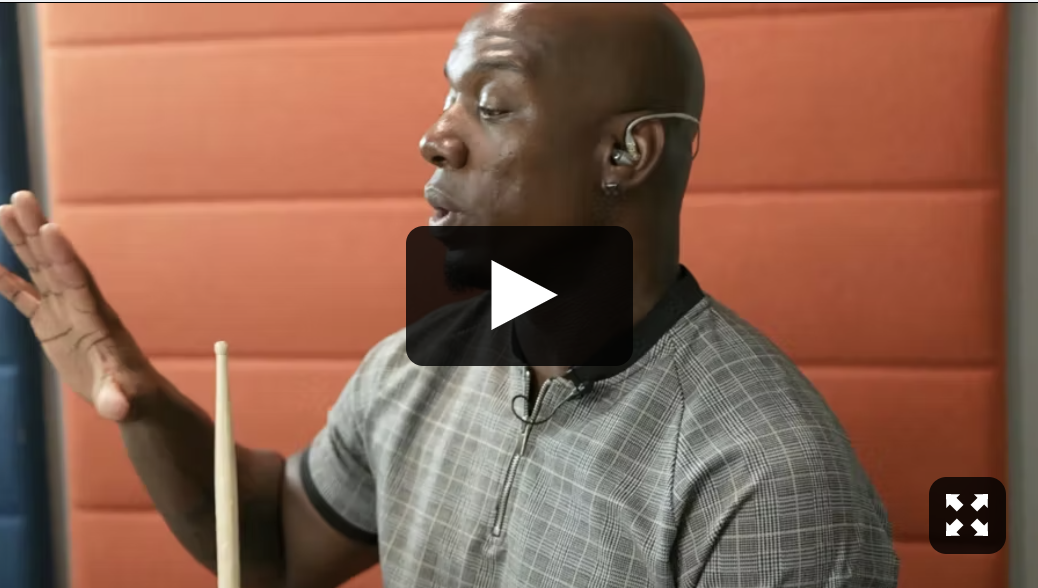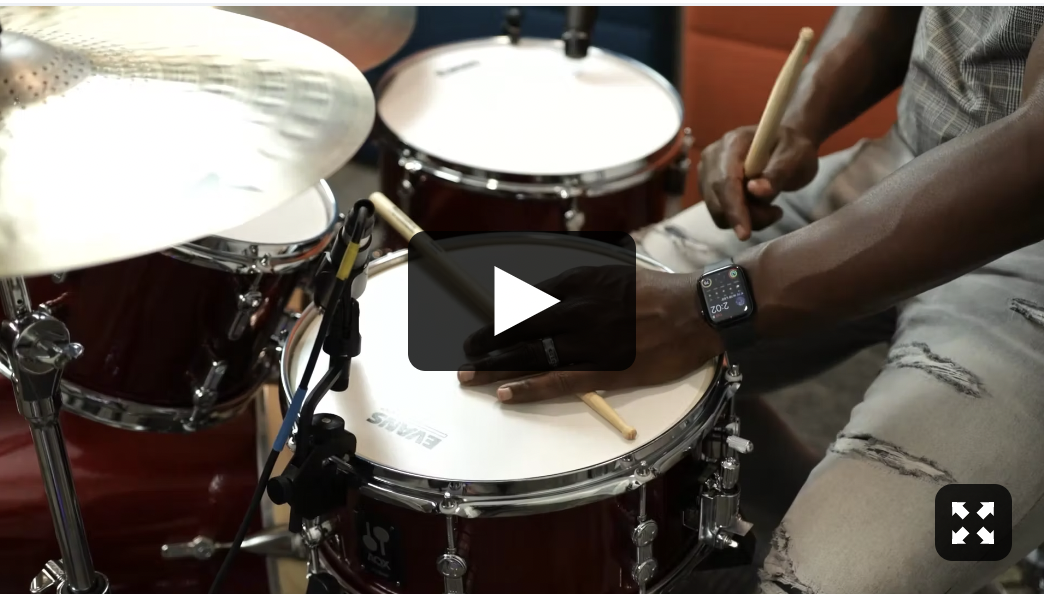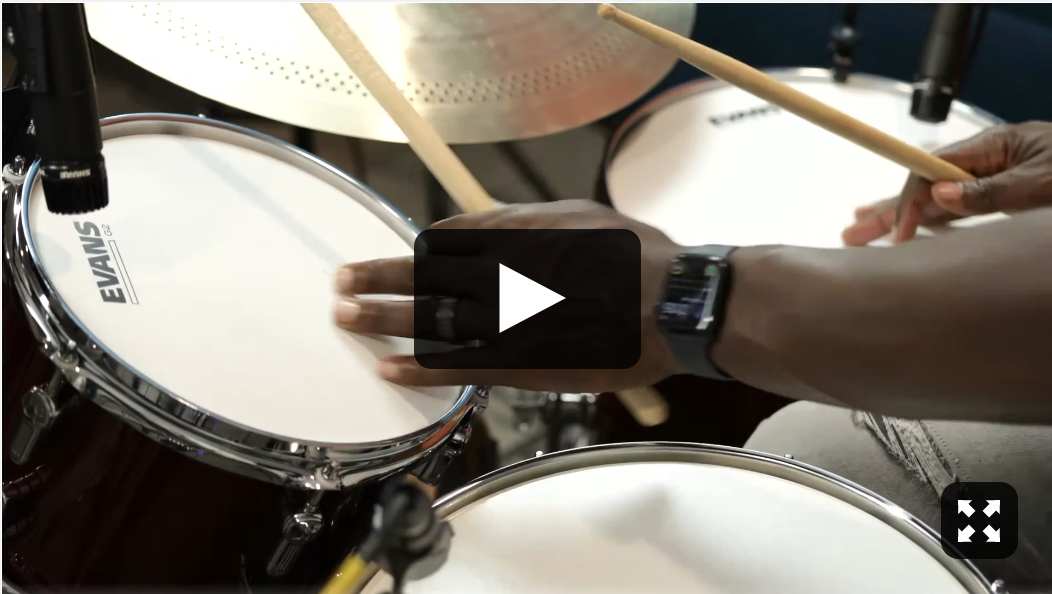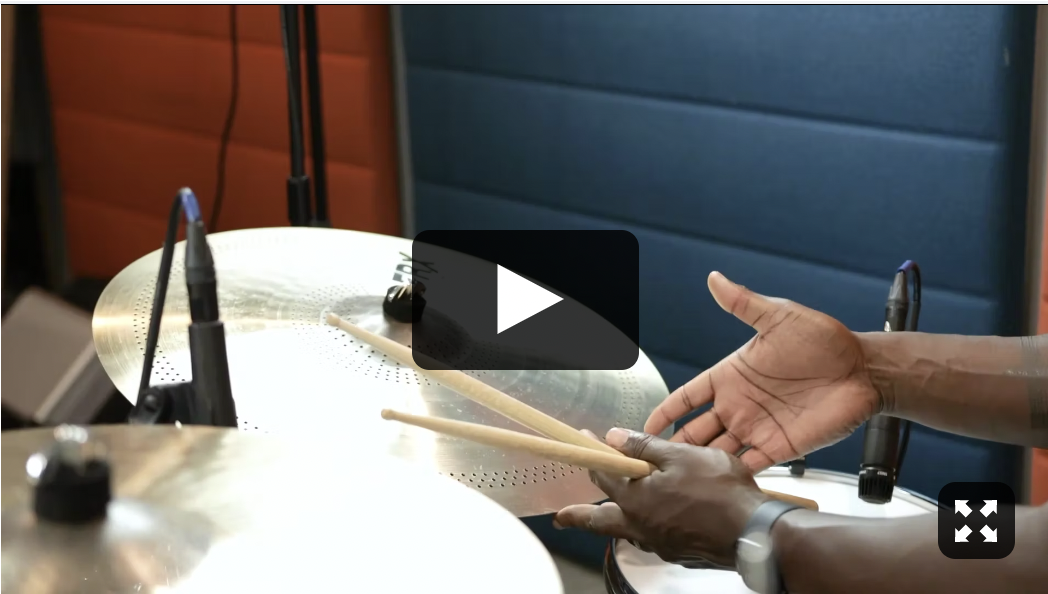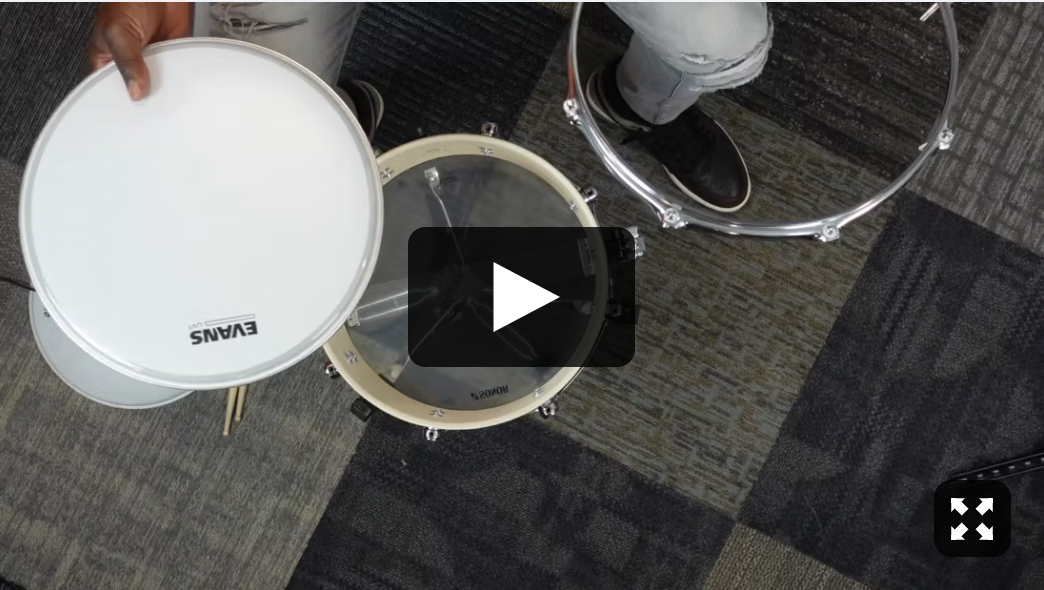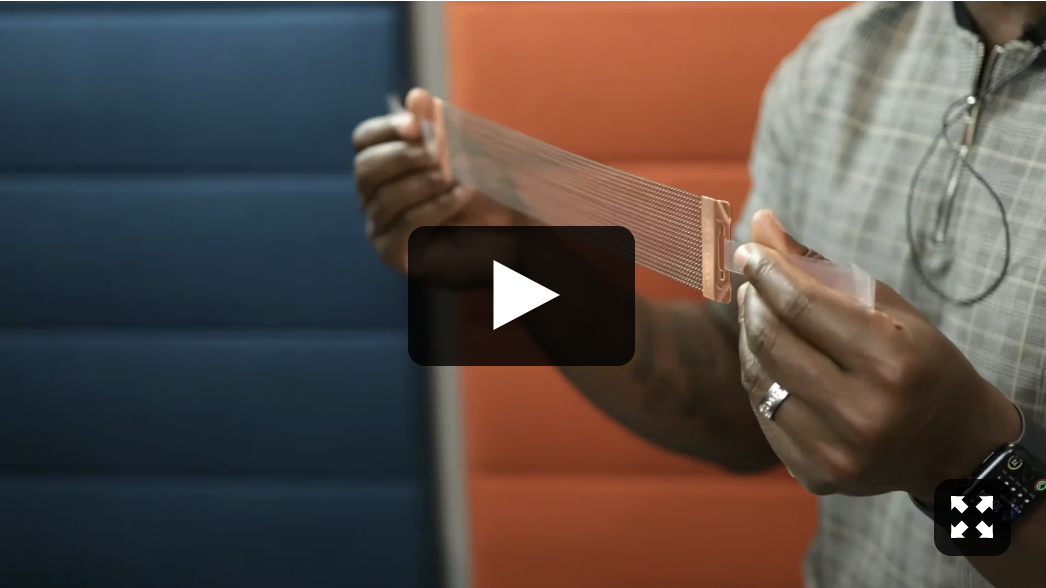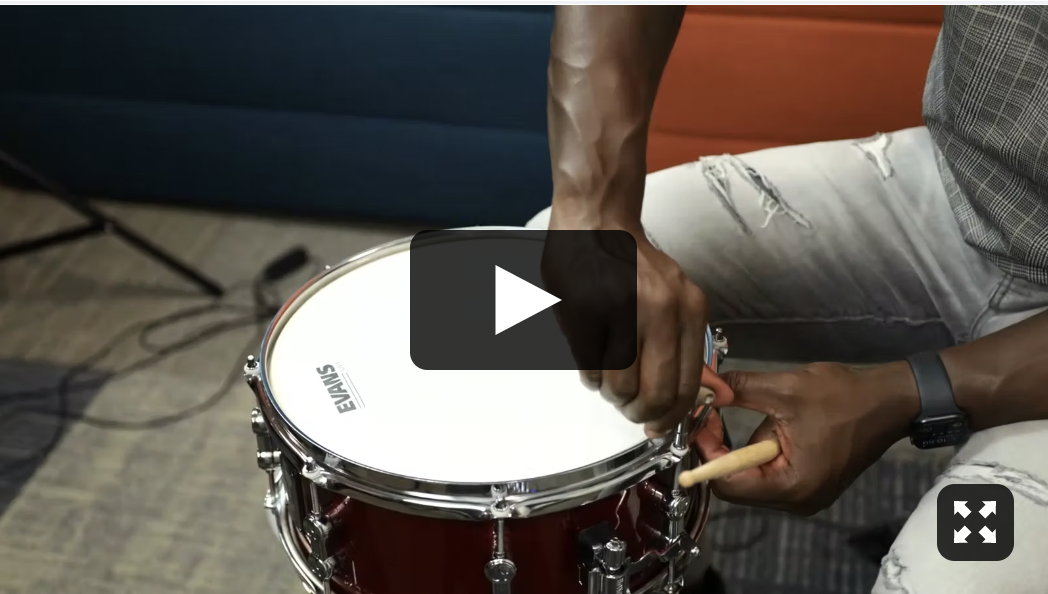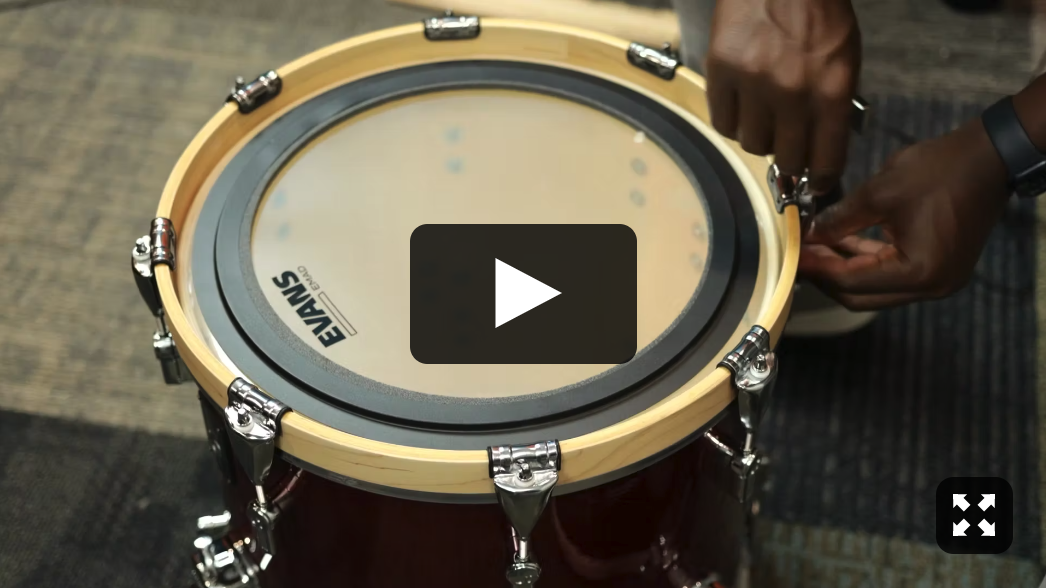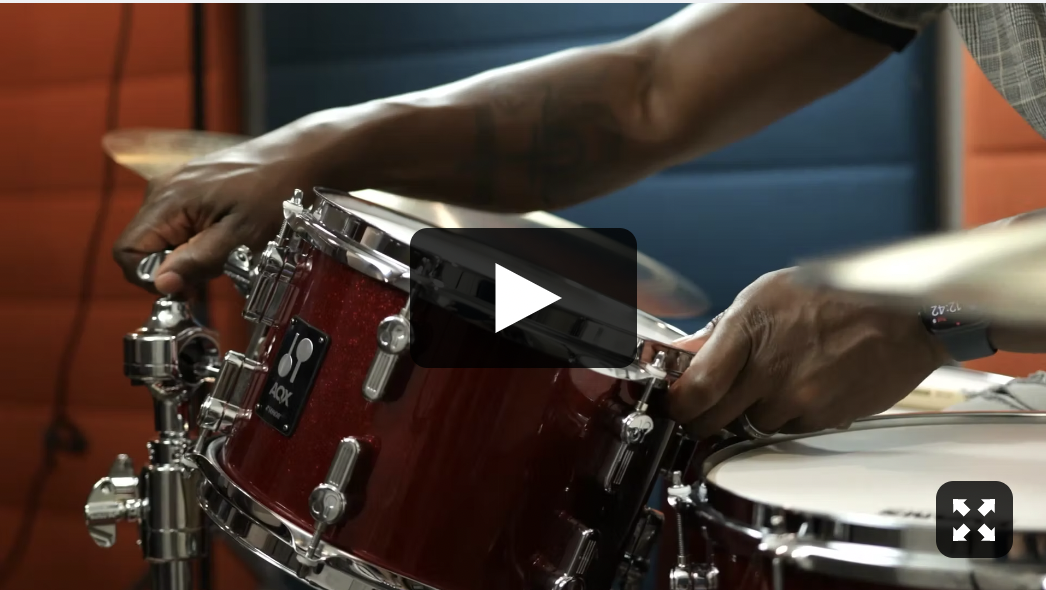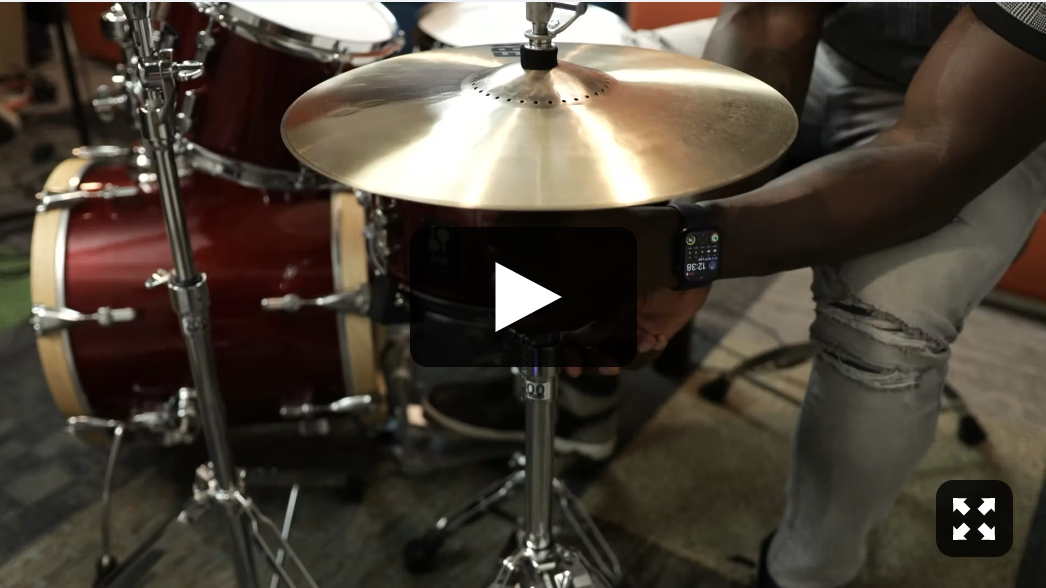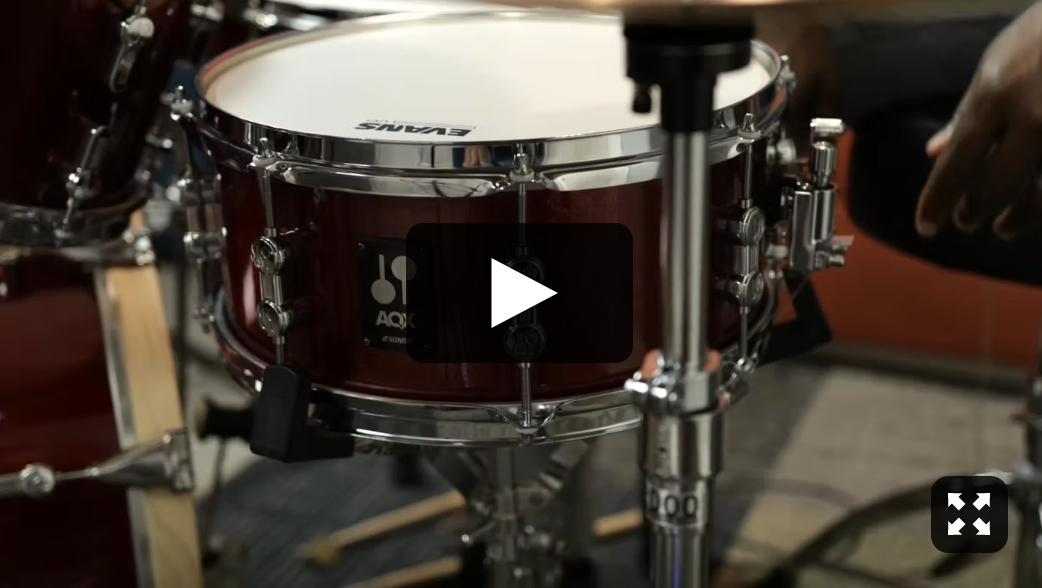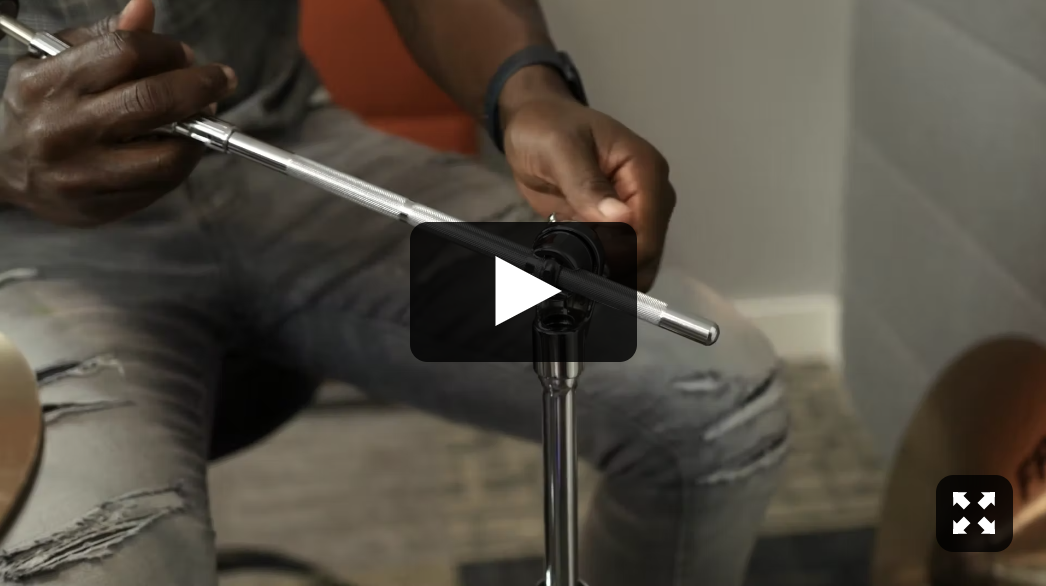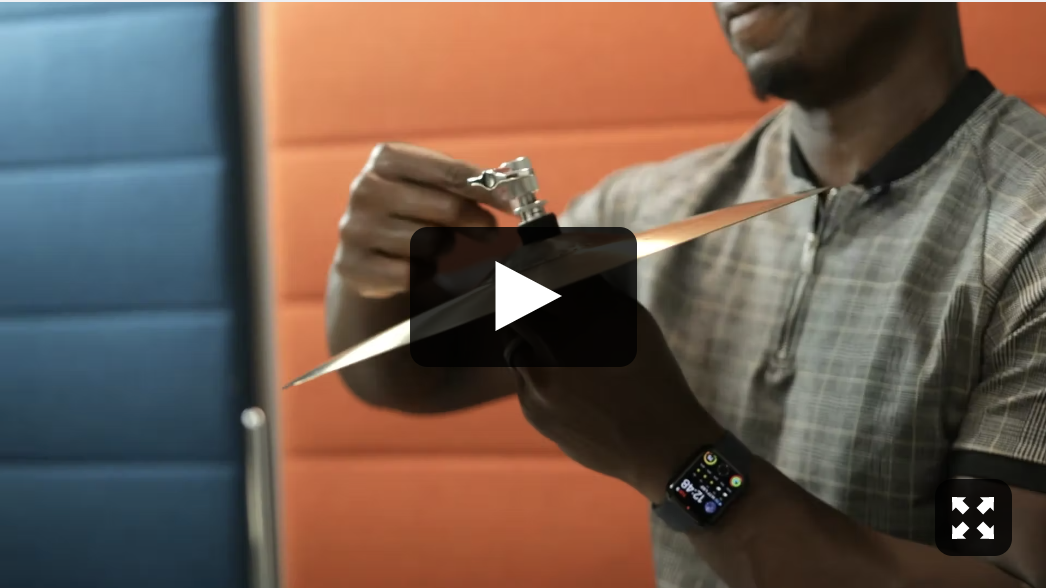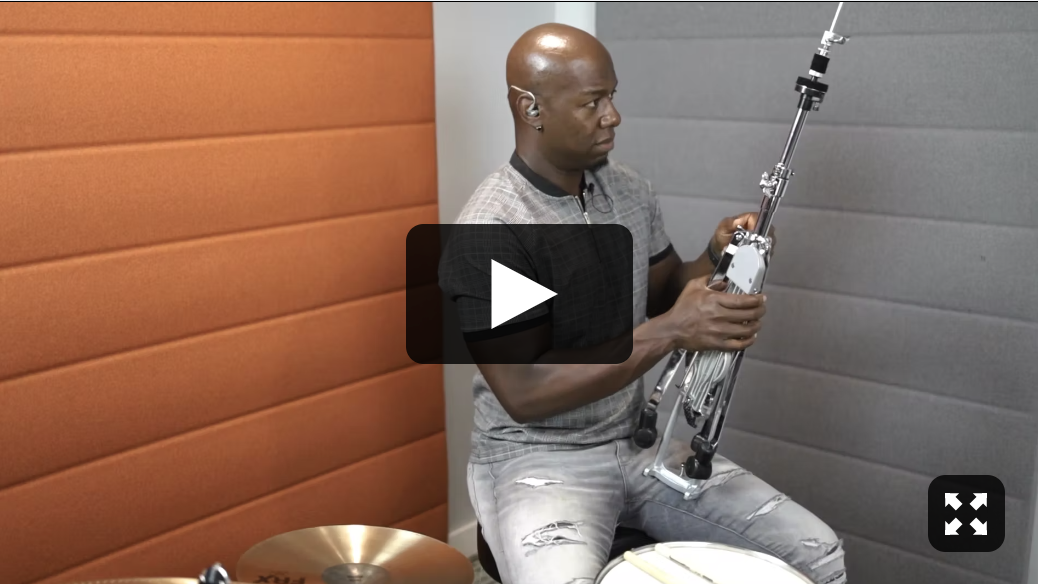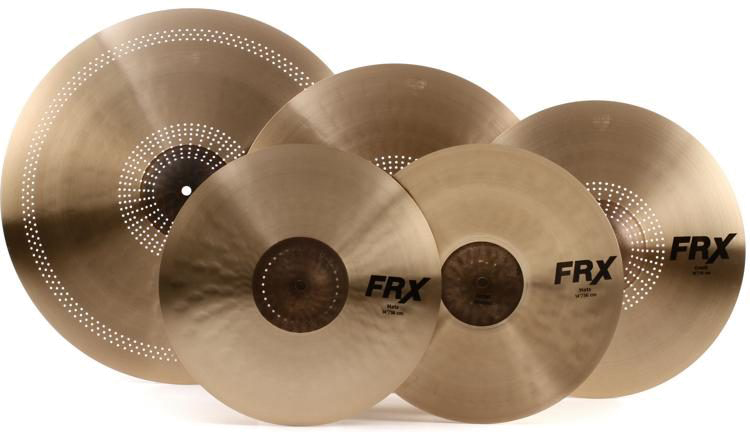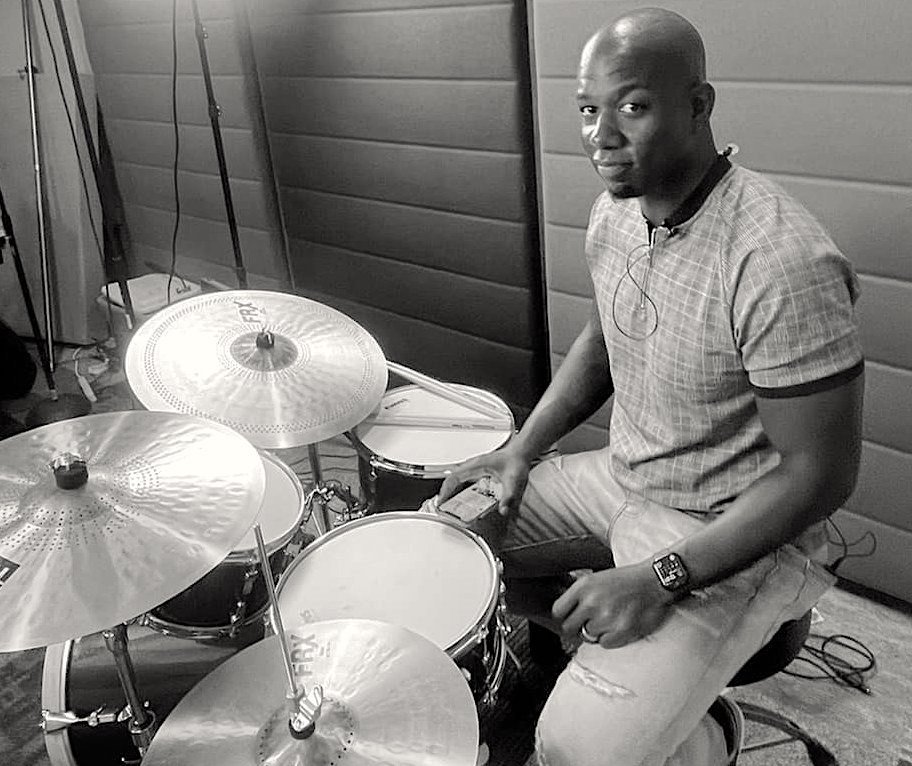Beginning Drumset
Getting Started
1 get
COMFORTABLE
Before you start playing, it’s important to get comfortable at the kit. Every player’s drum and cymbal placement is going to be different and learning how to situate yourself will make you more successful.
STICK TECHNIQUE
Using good technique will allow you to play the drum set easily. Creating good habits takes mindfulness, but fixing bad habits is frustrating and takes time.
PEDAL TECHNIQUE
Both feet have individual roles in playing grooves. Learn the best ways to use the kick and hi-hat pedal to maintain control in your playing.
Grooves
2 play in time
The most important job of a drummer is to play a groove with rhythmic intention that follows a steady beat with even subdivision. Playing out of time with limbs not attacking together will ruin a groove, making it not fun to play or play along with. Spend more time focusing on making a simple groove sound great instead of learning new patterns that have errors.
DRUM PATTERNS
These basic drum patterns can be used in many situations and are the skeleton for countless grooves.
The Basic Groove has the kick on beat one, the snare on the backbeat (beats two and four) and the hi-hat playing an eighth note subdivision.
VARIATIONS
Once the basic grooves have been mastered, vary the pattern by changing the kick drum rhythm.
Kick Drum Variation Altering the kick drum rhythm of a groove changes its identity. This variation adds an additional attack to the basic backbeat groove on the and of two, creating contrast between the two halves of the measure.
Make Your Own Kick Variation Creating new patterns is easy by adding bass drum attacks to beat one. Make sure that the attacks line up with the subdivision grid and that the rhythm is played with intention. Practice improvising kick drum patterns until you find one that you like. Repeat it and write it down so you can use it later.
Alterations
3 Change it up
Altering a groove using open hi-hats, ghost notes, and subdivision shifts creates a less stiff and robotic performance on stage and in the studio. Listen to this performance to hear how these changes bring life to the groove.
SUBDIVISION
Subdivision flow is the driving force of the drum groove. The subdivision that is used for the flow and the instrument that it is played on changes the overall character of the groove.
Subdivision Colors The subdivision flow can be played by the hi-hat, ride, toms, or rims. Changing where the flow is played alters the timbre of the groove without changing the overall pattern.
GHOST NOTES
Ghost Notes are played when the snare is attacked with a low velocity. Ghost notes can be used within a groove to fatten the sound.
FILLS
A drum fill is used to transition between phrases and song sections and usually occurs at the end of the last measure in a phrase.
A Simple Drum Fill consists of three eighth notes played on the snare drum starting on the and of three.
Colors
4 Add Color
Drums and cymbals can create many different timbres or colors depending on where they are attacked. Listen to the different colors that the drums and cymbals can create in these 2 performances.
CYMBALS
Learn how to harness the different sounds of the hi-hat, ride, and crash cymbals to add more “bling” to your grooves.
The Hi-Hat is primarily used for subdivision flow. Learn how to change the sound with the foot pedal.
The Ride Cymbal is another place for playing subdivision flow. The playing zones (bell, bow, edge) can be used in different patterns to change up the flow.
The Kit
5 ADJUST YOUR KIT
Being able to tune, maintain, and adjust parts of the kit are essential skills for the drum set player.
TUNING
Top snare head The snare is the most important drum in the kit. Changing the batter head when it is worn will allow you to get a reliably good sound.
Snare side and snares The snare and snare side head gives the snare drum its sonic characteristic. Changing the snares and snare side head will add more crispness to the sound.
Tune the snare drum batter head for the feel, the snare side head for the pitch, and dial in the amount of snare tension for the amount of snare attack.
DRUM PLACEMENT
Hi-Hats Adjusting the stand, height of the cymbals, and distance between the cymbals changes how easily they can be played.
SET UP/TEAR DOWN
Cymbal Stands Being able to put together a stand in an efficient way makes setup and tear down of a kit quick and easy.
Setting Up the Hi-Hat Stand is one of the more complex pieces of a drum set. Putting it together correctly will help it function for years.
Teacher Q&A
Q&A
Adam Hill answers frequently asked questions from music educators about drum set in the classroom in a podcast interview with Shed the Music’s Bob Habersat.
Watch the full video or jump to a questions using the links in the drop down menu below.
Gear
Drums
There are many different types of drumsets available at many different price points. The most important thing to consider when evaluating your current gear and/or thinking of purchasing a new set are the sizes, tone wood, and hardware quality. A lower priced kit with quality hardware will last for many years as long as the bearing edges are kept true, the lugs are lubricated, and the rims don’t bend. Invest in a set of padded gig bags or hard shell cases with a dedicated cart to transport the drums. Build care and maintenance into the culture of the drummers at your school and you can keep higher quality instruments for longer.
-
The drumset that was used in the video series was a Sonor AQX Jungle set. The kit has a 16” bass drum, 10” and 13” toms, and a 13” snare. This small sizes work well in a classroom setting where a full volume drumset might not be best. One of the stand-out features of the AQX is the snare drum. Even though it's a little smaller in diameter, it is an inch deeper than a standard drum giving great depth to its sound. The smaller sizes of the drums also make it look less intimidating for younger or smaller players.
-
Drumsets for the stage come in different size tom sets with different size kick drums. All sets come standard with a 14” snare drum. The fusion and standard tom sizes can come with a 20” or 22” kick drum. The 20” is a sweet spot for portability, punch, and depth of sound.
Bop: A bop set has an 18” kick, 12” rack, and a 14” floor tom. This kit is great for jazz.
Fusion: A fusion set has a 20” or 22” kick with a 10”, 12”, and 14” toms. These sizes are the most versatile for school use.
Standard: A standard kit has a 20” or 22” kick with a 12”, 13” and 16” toms.
Sonor makes these sizes of the AQX kit as well. If you want to move up to a maple shell, the AQ2 line from Sonor comes in the same sizes while having a bit more high end punch. Another drumset to consider is the Mapex Mars line of drums. They are another option for great quality and sound for the price.
Cymbals
Cymbals define a drumset. A good set on any kit will make it more fun to play and more enjoyable to listen to. The dynamic characteristic of a higher grade cymbal will also make it easier for students to develop a sensitive touch. A great cymbal will be able to produce many timbres, which can also limit the amount cymbals you would need to purchase. Always have students take cymbals off of the stands during transport and protect them with a padded gig bag or hardshell case to ensure that they don’t bend or crack.
-
Sabian’s Quiet Tone line of cymbals gives the feel and sound of playing cymbals at a very low volume. These cymbals are perfect for a practice room to give students the opportunity to practice with gear that feels the same as the stage volume counterpart.
-
Sabian’s FRX line of cymbals have holes drill in specific locations to reduce the certain frequencies to reduce the overall volume. The result is a cymbal that works well for lower volume situations such as a classroom, orchestra pit, or small stage. Having a lower volume lets students play out without drowning out the rest of the band. These are the cymbals that were used in the filming of the video series.
-
Heads
A new set of heads can change the character of a new drum kit, they can revitalize the sound of an old kit, and they can make the most out of a budget kit. There are many variables for drumhead construction: the amount of layers or plys, the thickness of the plys, the material of the plys, the finish, and the existence of integrated muffling.
-
The drum heads used in the recording are Evans EMAD. They have an adjustable integrated muffling system that makes it easy to go from an impactful rock kick to a more open sound.
-
The drum heads used on the snare in the recording were from an Evans UV1 snare pack. The UV1 coated head is very impressive. It is VERY durable and will hold up to the heaviest of hitters while retaining the coating. This makes a perfect head for a kit that will get used for pep band gigs that also needs to have texture available for jazz brushes. The kit also includes muffling gels, a snare side head, new snares, and lug lubricant.
-
The toms in the recording used G2 2-ply coated batter heads and EC2 resonant heads. The 2-ply batter heads lower the pitch of the small drums and the EC2 resonant heads have an integrated control rings to manage the tom’s decay.
-
You can make any drumset into a low volume practice kit by using Evan’s db one drumheads. These heads retain some drum tone while bringing the volume WAY down- making it perfect for a shared use practice space. This can also be used for quiet jamming with acoustic guitars, acoustic basses, and unamplified vocals.
ABOUT THE CONTRIBUTOR
ADAM HILL
Adam D. Hill is a music educator and percussionist in the Chicagoland area. He received a B.A. in Music Education from VanderCook College of Music with an emphasis in percussion. Hill is the director of percussion, assistant band director, and teaches jazz band, music technology, music theory, and guitar at Romeoville High School, and he also teaches Music Technology at the University of St. Francis. He founded Pioneer Indoor, and is the executive director of Pí Percussion Inc. (an award winning independent marching percussion ensemble). Hill spent ten seasons as a member of the Chicago Bears drumline and 15 years as a performing member and director of the Chicago Bulls “Stampede“ Drumline.

